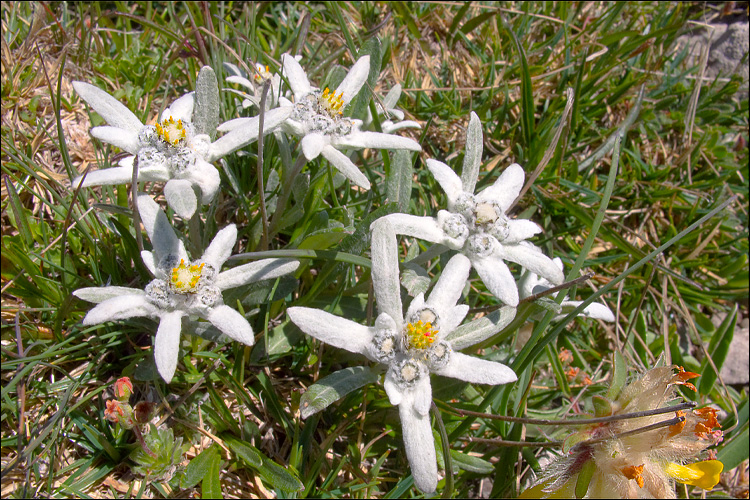Reproduction
What is the reproductive
cycle of Edelweiss?
Rather surprisingly, botanists did not adequately understand the Leontopodium alpinum reproductive cycle for around one hundred years after its formal discovery, most likely due to the plant’s remote location in the mountains. Even today, it is difficult to declare that everything can be known about any organism out there. Regardless, Edelweiss is undoubtedly a flower that uses insects to pollinate and reproduce. While there is debate over the number of insects that are able to physically visit these plants because of their high altitude, there is no research completed yet that can adequately dismiss this claim.
In order to pollinate flowers, insects must be attracted to a plant,
and smell is an important sense utilized in this ecological
relationship. Through research, the scent of Edelweiss’s nectar is considered to
be both “honey-like and sweat-like” (Erhardt 1992). Insects are
generally drawn to sweet smells, so it is likely that while the
honey-like smell is welcoming, the sweat-like one is disagreeable
for many insects. Another element to consider in whether insects
(and what types) visit Leontopodium alpinum is the environment and weather. The
insects must be able to survive quite cold and dry climates and not
be meticulous over potential snow and wind. The most common visitors
to the plant, according to Erhardt’s research, appear to be the
Muscidae (see
Interactions).

When insects visit the plant, they land in the center of a clone and
travel in a circular path around the flowering section (Erhardt
1992). The flies
often use the bracts to travel between one set of inflorescences to
the other, rather than flying the short distance between. Flies can
stay on one clone for up to fifteen minutes, a rather lengthy
period, and the number of pollen grains each can carry varies
significantly between individuals and species (Erhardt 1992).
Therefore, just a few insects can be responsible for more than half
the number of pollen grains a plant receives (Erhardt 1992). When considering how
many pollen grains an insect can carry, it is also interesting to
look into how insects are able to hold these grains. Incredibly,
insects can carry pollen grains all over their body, including their
legs, head, mouth, etc. Through Erhardt’s research, most of the
pollen grains were found on the legs, but they were centralized on
the head as well, and can essentially be found anywhere, just with
less regularity. It is also crucial to recognize that the insects
that pollinate Edelweiss do not do so singularly; they also carry
pollen grains for other plants and are able to pollinate them in a similar
manner.
While there is still much debate on how often and what species of
insects are able to pollinate Edelweiss because of environmental
restrictions, research suggests that the pollination of one larger
clone is enough to produce an adequate set of seedlings.
Leontopodium alpinum is generally a high producer of seeds, and
this is most likely an evolutionary advantage because of the other
restrictions that exist in Edelweiss's ability to reproduce (Erhardt 1992).
As briefly mentioned already, members of the fly family Muscidae are
believed to be the main contributors pollinating Edelweiss. This is
depicted in Erhardt’s research, and highlighted by two main
factors—they are the most common visitors and carried more pollen
grains than smaller insects (of different families). These flies are
likely attracted to Edelweiss because of the smell, as well as the
white, hairy bracts, which may glisten in the sunlight. The nectar
is also typical of plants that have fly pollinators—“rich in hexose
and with a high amino acid concentration” (Erhardt 1992).
Leontopodium alpinum is a plant that can reproduce sexually or
asexually through pollination with the help of several different insects. The
offspring produced are thus sometimes identical to the parent,
and while mutations can occur to alter the genetic makeup, such
mutations are rare and random. Pollination is an effective means for
the reproduction of Edelweiss, but the plant is still protected in
many areas of the world for a number of different reasons (see
Interesting Facts).
I
hope this page has provided you with ample information about the way
Leontopodium alpinum reproduces, and has been helpful in
any way. Keeping in mind that insects are the main contributor to
successful reproduction of the Edelweiss plant, the species also
interacts with other organisms.
Back to Home Forward to Interactions
Please see the
References page for information about where this data was
aqcuired.
Written by Lizzy Wlodyga